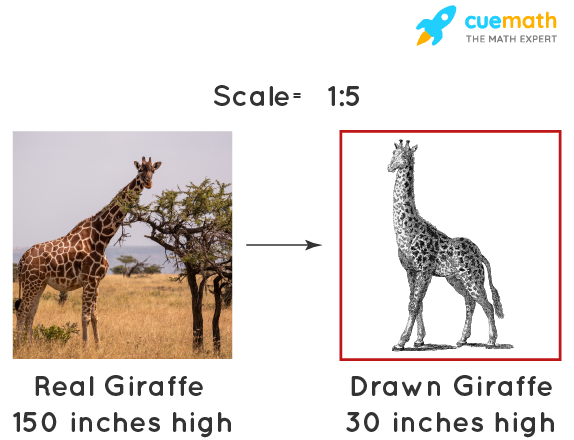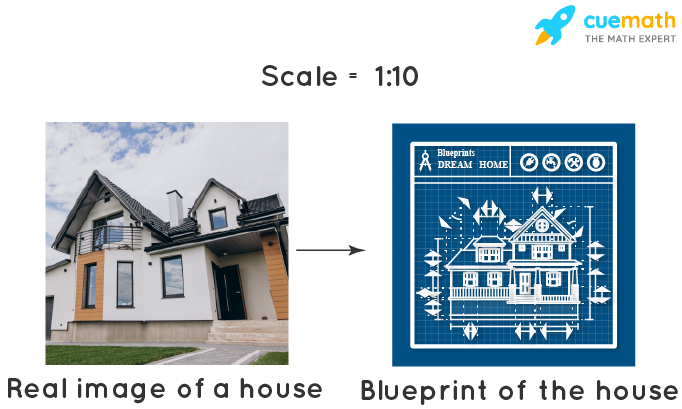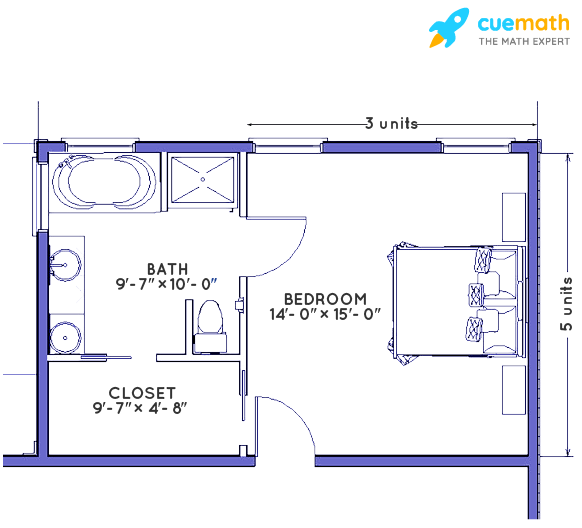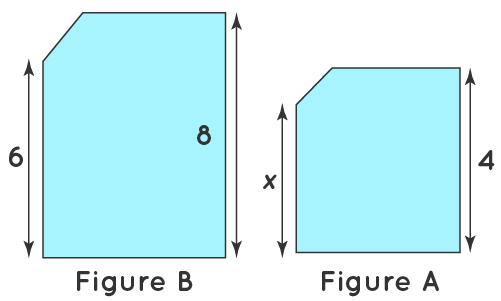Scale
Scale is a ratio that represents the relationship between the dimensions of a model and the corresponding dimensions on the actual figure or object. It helps in representing real-world things on paper with comparatively smaller dimensions. Scale is mostly used in maps and blueprints used for the construction of buildings.
| 1. | Definition of Scale |
| 2. | How to Use a Scale For Drawings? |
| 3. | How to Interpret Scale Drawing? |
| 4. | Solved Examples on Scale |
| 5. | Practice Questions on Scale |
| 6. | FAQs on Scale |
Definition of Scale
Scale is defined as the ratio of the length of any object on a model (blueprint) to the actual length of the same object in the real world.
When we draw a real-world object on a piece of paper, we use a scale to describe our measurements accurately. For example, a scale of 1:5 means that the size of 1 unit in the drawing would represent 5 units in the real world. For example, if a giraffe with a height of 150 inches in the real world is represented as 30 inches on the drawing, it shows that a scale of 1:5 is used.

How to Use a Scale For Drawings?
Let us say you want to construct a house. Before constructing a house in the real world, the first step is to draw a blueprint. A blueprint is a drawing prepared with the help of a scale. The following points describe how to use a scale for drawings:
- In the case of house construction, if a wall is 100 inches high in the real world and represented as 10 inches in the blueprint, the scale will be 10:100 or 1: 10.
- The units and the dimensions used in the real world are greater as compared to the blueprint.
Observe the following figure which shows the real image of a house and its blueprint prepared with the help of a scale of 1 : 10

How to Interpret Scale Drawing?
A scale drawing can be interpreted very easily if the required information is given. Let us consider an example that shows how a scale is used to prepare the blueprint of a house and how the required dimensions are calculated and interpreted.
Example: Joe has used a scale of 1:100 for the blueprint of his new house. In the floor plan, the dimensions of the master bedroom are represented as 5 units by 3 units. What are the dimensions of the master bedroom in the real world?
Solution:
Step-1: The scale of 1:100 means that for every 100 units in a real-world, the house represents 1 unit on the blueprint drawing. In other words, 100 units of the actual house = 1 unit on a blueprint drawing

Step 2: Using the scale of 1 :100, we will calculate the actual dimensions. The scale factor is 100, therefore, we will multiply the blueprint dimensions by 100.
Length of the master bedroom = 100 × 5 = 500 units; Width of the master bedroom = 100 × 3 = 300 units
Related Topics on Scale
Check out the articles mentioned below to learn more about scale.
Solved Examples on Scale
-
Example 1. Figure A is a blueprint image of figure B. Can you find the value of x with the help of the dimensions given in the scale diagram?

Solution:
If we observe the two figures, we see that two corresponding lengths are given as 8 and 4.This means that the scale ratio of 8:4 is used to prepare the blueprint. Let us use this ratio to find x.
8/4 = 6/x
Therefore, x = 3. -
Example 2. Robert prepared the blueprint of a building using a scale of 1:190. His blueprint showed a square base that had the dimensions (side) marked as 4 yards. Find the dimensions (side) of the base of the real building and then its area.
Solution:
The given scale is 1:190, i.e, 1 yard on the blueprint represents 190 yards in the real world.
Here, the scale factor is 190.
The side of the square base is 4 yd in the blueprint.
Using the scale factor of 190, we can get the actual dimensions (side) of the square: 4 × 190 = 760 yards
Now, we will find the area of the square base. Area = (side)2 = (760)2 = 577600 yd2
Therefore, the side of the actual square base = 760 yards; the area of the base of the real building is 577600 yd2.

FAQs on Scale
What Does a Scale Factor of 0.5 Mean?
A scale factor of 0.5 means that the changed image will be scaled down. For example, the original figure of a square has one of its sides as 6 units. Now, let us use the scale factor of 0.5, to change its size. We will use the formula: Dimensions of the new shape = Dimensions of the original shape × Scale factor. Substituting the values in the formula, the dimensions of the new square will be = 6 × 0.5 = 3 units. This shows that a scale factor of 0.5 changed the figure to a smaller one.
Where do we Use a Scale Ratio?
A scale ratio is a number by which the size of any geometrical figure or shape can be changed with respect to its original size. When things are too large, we use scale factors to calculate smaller, proportional measurements. It is used to compare two similar geometric figures. Scale drawings are useful for construction engineers and designers because they can be used to visualize landscape plans before constructing a building on the ground.
What is a Scale Factor of 5?
Scale factor is the conversion factor that is used to convert the dimensions of the given shape or figure. The scale factor of 5 means that the new shape that is obtained after scaling the given (original) shape is five times the shape of the original shape.
What does a Scale of 1:50 Mean?
The scale of 1: 50 means that 1 unit on the blueprint will represent 50 units in the real world. For example, 1 ft of a dummy model is equal to 50 ft in the real world.
What does a Scale of 1:30 Mean?
The scale of 1: 30 means that 1 unit on the blueprint will represent 30 units in the real world.
visual curriculum